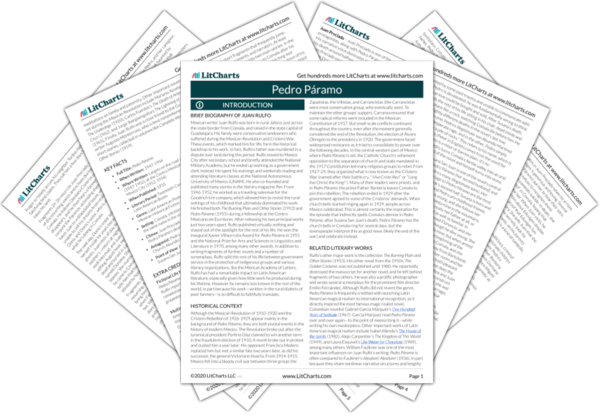Death, Hope, and Despair
Pedro Páramo interweaves multiple stories set in the small Mexican town of Comala. In one, Pedro Páramo gradually amasses power until he owns the whole town and fathers everyone born there. In a second story, Pedro’s childhood sweetheart, Susana San Juan, returns to Comala to marry him but lives out her final days bedridden and locked in her room. Many years later, in the novel’s main frame story, Juan Preciado visits Comala after his…
read analysis of Death, Hope, and DespairPower and Morality
In one of Pedro Páramo’s multiple intertwined plots, the title character rises from relative obscurity, as the son of indebted farmer Lucas Páramo, to own and fully control absolutely everything in his hometown of Comala. Rulfo’s depiction of Pedro Páramo is in part a critique of the unequal, semi-feudal social structure that defined the rural Mexican society where he grew up. But it is also a critique of power in general: Rulfo shows…
read analysis of Power and MoralityHistory, Memory, and Narrative

Love and Patriarchy
From its opening lines, Pedro Páramo invokes the classical association between identity and paternity: Juan Preciado seeks out his estranged father, Pedro Páramo, in order to cope with his mother Dolores’s death and claim the property that is his birthright. But Pedro Páramo is dead, and everyone in Comala is also Pedro’s descendant, giving them an equal claim to Pedro’s land. Juan learns that Pedro exercised absolute power over all the women and…
read analysis of Love and Patriarchy






